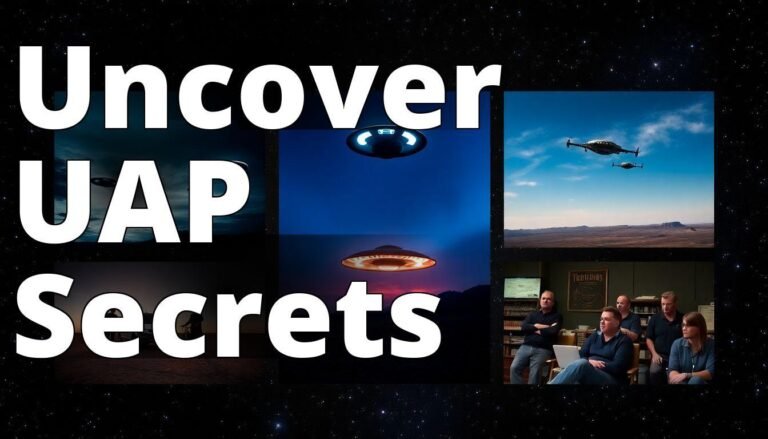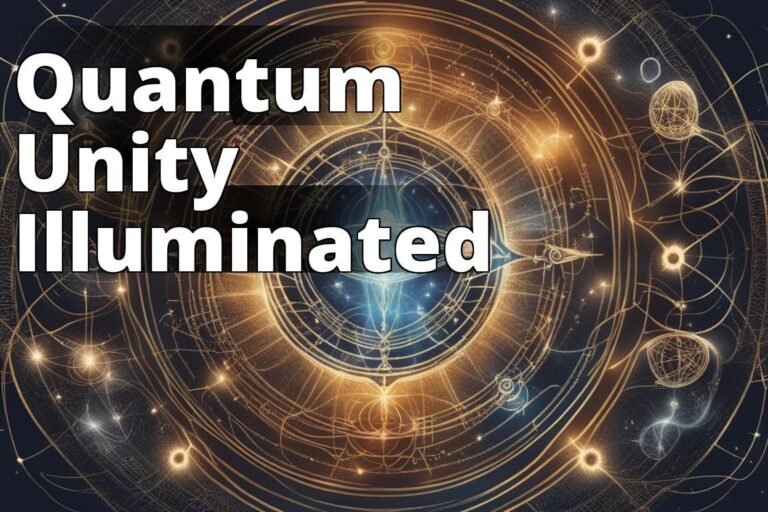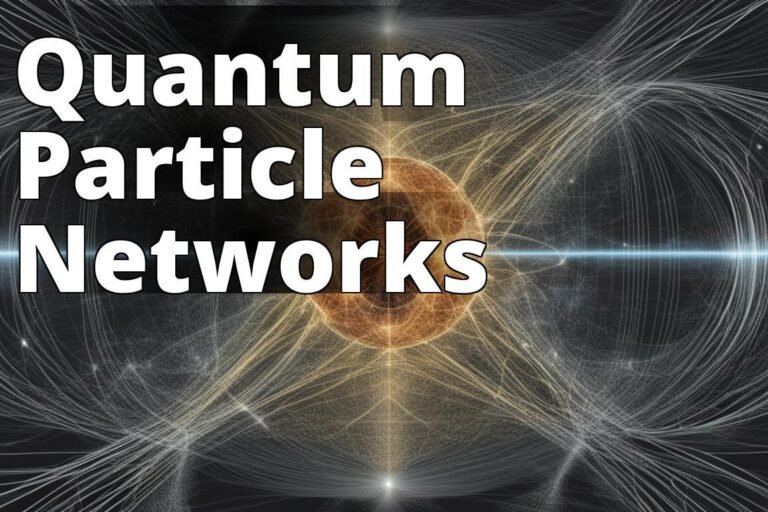The Double Slit Experiment
If you’ve ever wondered about the mysteries of the universe, you’ve probably come across the term “double slit experiment.” But what was the “Slit” experiment in Physics really about, and why does it matter so much? Let me take you on a journey through this iconic experiment that has puzzled and fascinated scientists for over two centuries. It’s an experiment that, at first glance, seems simple yet unlocks the perplexing world of quantum physics.
Understanding the Double Slit Experiment
Learn about the fascinating implications of the double slit experiment in physics and its connections to consciousness and the supernatural.
– The double slit experiment demonstrates how particles, like electrons and photons, can exhibit both wave-like and particle-like behavior, challenging classical physics.
– When conducted with light, the experiment reveals interference patterns, indicating that light behaves as a wave, while with electrons, it shows the dual nature of matter.
– The inclusion of consciousness and quantum erasers raises intriguing questions about the role of observation in determining outcomes, blurring the lines between physics and metaphysics.
What is the double slit experiment?
The double slit experiment is a quintessential demonstration in quantum mechanics, showcasing how particles like photons and electrons can display characteristics of both waves and particles. Picture this: you have a barrier with two parallel slits, and you shine a light or send particles towards it. If you only consider classical physics, you might expect the particles to simply pass through the slits and form two distinct bands on a screen behind the barrier. However, what happens is far more intriguing.

When light or particles are sent through the slits, they don’t just form two bands; instead, they create an interference patterna series of light and dark bands. This pattern indicates that the particles are behaving like waves. It’s as if each particle goes through both slits simultaneously and interferes with itself. This suggests that at a fundamental level, particles are not just solid objects but have wave-like characteristics. The implications of this experiment challenge our classical understanding of reality.
For a deeper dive into the historical and theoretical underpinnings of this experiment, you might want to explore this comprehensive resource.
What does the double slit experiment show?
The results of the double slit experiment fundamentally demonstrate the dual nature of light and matter, where they exhibit both wave-like and particle-like properties. This is the cornerstone of quantum mechanicsa field that defies the intuitive perceptions we have based on everyday experiences.

One of the most bewildering outcomes of the experiment is what happens when we try to observe which slit a particle goes through. Introducing a measurement device at the slits collapses the wave function, and the interference pattern disappears. Suddenly, particles behave like particles again, forming two distinct bands. This suggests that the act of observation itself influences the outcome, a concept that has profound implications on how we understand consciousness and reality.
Insider Tip: Quantum mechanics often defies logic. As physicist Richard Feynman famously said, “If you think you understand quantum mechanics, you don’t understand quantum mechanics.”
What is the double slit experiment with light?
When the double slit experiment is conducted with light, it provides an elegant illustration of the wave-particle duality. Initially, Thomas Young, in the early 1800s, used this setup to demonstrate that light behaves as a wave, contrary to the then-prevailing view of light as purely particle-based propagated by Newton.

As light passes through the slits, it disperses into a pattern of bright and dark fringes on a screen. The bright bands occur where the light waves from each slit meet in phase and constructively interfere, while the dark bands result from destructive interference where the waves are out of phase. This was revolutionary because it supported the wave theory of light, a theory that was only later, with the advent of quantum mechanics, reconciled with the particle nature of photons.
This experiment with light waves is not only a fundamental physics demonstration but also a practical application in technologies such as holography and the study of optical phenomena.
What is the double slit experiment with electrons?
Fast forward to the 20th century, when scientists decided to perform the double slit experiment with electrons, particles known for their mass and charge. The results were astonishingly similar to those with light, further solidifying the intriguing nature of quantum mechanics.

Electrons, when not observed, create an interference pattern akin to that of light waves. This demonstrates that electrons, and by extension all matter, have a wave aspect to their nature. However, when a measurement is attempted to determine which slit the electron passes through, the pattern collapses into two bands, signifying particle behavior. This result defies classical intuition and suggests that the universe at a microscopic level does not adhere to the deterministic laws we observe in our macroscopic world.
One might ask, how does an electron “decide” whether to behave as a wave or a particle? Are they inherently both, or something beyond our current understanding?
What is the double slit experiment with humans?
While it might sound like a concept from science fiction, the idea of conducting the double slit experiment with humansviewing them as quantum objectsis a thought experiment that explores the boundaries of quantum mechanics. Although practically impossible due to the significant size and mass of humans compared to subatomic particles, it raises fascinating questions about the nature of consciousness and reality.

If we consider humans as quantum entities, we must question: Would our observation of events affect their outcomes in the same way it does with electrons or photons? Could this imply that our reality is influenced by our perception? This thought experiment challenges us to rethink the fabric of reality and the potential role of consciousness in shaping it.
Thought-Provoking Question: If humans could be considered quantum objects, how would this affect our understanding of free will and destiny?
What is the double slit experiment with consciousness?
The intersection of consciousness and quantum mechanics is one of the most contentious and intriguing topics in modern science. Some propose that consciousness, the act of observing or measuring, plays a key role in the collapse of the quantum wave function, as seen in the double slit experiment.
This raises philosophical questions: Does consciousness create reality? Are we, as observers, an integral part of the universe’s fabric? Such ideas have been explored in depth by physicists and philosophers alike, with varying interpretations. While many in the scientific community remain skeptical of these claims, others argue that understanding consciousness may be crucial to grasping the true nature of quantum mechanics.
Insider Tip: Explore the “observer effect” and its philosophical implications in quantum mechanics to better understand the potential role of consciousness in shaping reality.
What is the double slit experiment with a quantum eraser?
The quantum eraser experiment is a sophisticated extension of the double slit experiment that further complicates our understanding of reality and observation. By adding a mechanism that “erases” the information regarding which path a particle took, the interference pattern can be restored even after the particle has been detected. This suggests that the very potential for information to be known impacts the behavior of particles.

This counterintuitive result indicates that the past behavior of particles can be altered by future actions, challenging the linear perception of time and causality. The quantum eraser experiment thus pushes the boundaries of how we understand cause and effect in the quantum realm.
Thought-Provoking Question: If future actions can influence past events at the quantum level, what implications might this have for our understanding of time and history?
Conclusion
The double slit experiment, in all its variations, remains a profound mystery and a cornerstone of quantum mechanics. It forces us to question our understanding of reality, the role of consciousness, and the very fabric of the universe. While the experiment poses more questions than answers, it undoubtedly fuels the imagination and curiosity of scientists and philosophers alike.
As we continue to explore these quantum mysteries, we must ask ourselves: Are we mere observers in a deterministic universe, or do our observations play a fundamental role in crafting reality? The answers may forever change our perception of the cosmos and our place within it.
For more intriguing insights into the physics of the supernatural and how they challenge conventional science, visit Thin White Lies.
Questions and Answers
What is the “Slit” experiment in Physics?
The “Slit” experiment explores light’s dual wave-particle nature.
Who conducted the “Slit” experiment in Physics?
Thomas Young first conducted the “Slit” experiment in 1801.
How does the “Slit” experiment relate to the supernatural?
The experiment raises questions about consciousness and reality’s nature.
What is the significance of the “Slit” experiment’s findings?
Its findings challenge classical physics and suggest deeper mysteries.
Can the “Slit” experiment be replicated easily?
While replicable, it requires precise conditions and equipment setup.
Why do some doubt the implications of the “Slit” experiment?
Critics argue interpretations may overreach into metaphysical realms.







